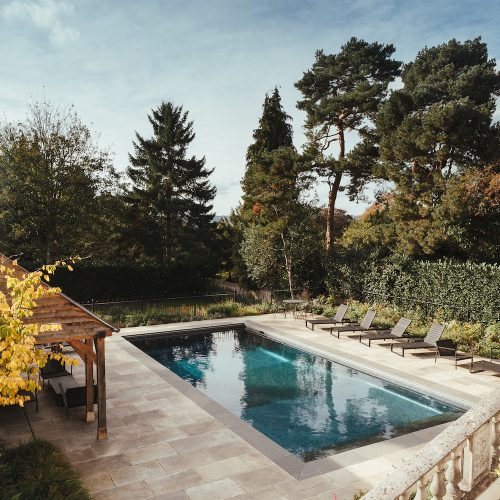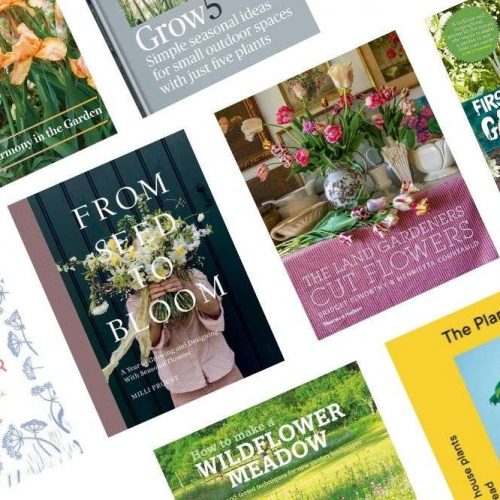Garden Goddess: July!
Gardenscape provides our latest monthly lowdown on what we should be doing in the garden to make it picture-perfect this summer. It’s mostly sun and games, but there’s a little bit of work to do, too…

The temptation right now is to relax in the garden and ignore all of the tasks that need doing. And, while we do encourage this to a certain extent (after all, what are you making your garden look nice for if not to enjoy it?) there’s also a few things you’ll want to tick off the to-do list before you top up the tan and get started on a new book.

The good news is, while there’s always things to do, July sees a lot of maintenance to keep things fresh and healthy, rather than huge renovation tasks that’ll eat into your sunbathing time. Doing these things little and often will ensure your garden continues to thrive, and you won’t feel hard done by, or, hopefully, overheat.
Here’s some of the ways you can work on your garden in July to keep it looking healthy…
Weed deeds
This month, it’s a good idea to hoe and weed your borders regularly, to stop the weeds setting seed.
Warm dry weather is the perfect time to hoe – keep your hoe sharp and it’ll be much easier to cut through the weeds. Once you’ve loosened the weeds, leave them on the surface to dry out in the sun – if the ground is too wet, they could re-root which means all of your hard work will be wasted!
If the hoe’s not cutting it – literally – then you might need to employ the help of something a little stronger. A glyphosate-based weed killer should do the job, especially on anything with a larger leaf surface with which to absorb it.
Plant ahead
It almost doesn’t bear thinking about, but much like buying new school uniforms before the summer’s out, now’s also the time to start planning and planting for your autumn garden. Options include the likes of Cyclamen, which are pretty hardy and will grow in shadier areas of the garden, to Begonias, which are less hardy so you’ll want to lift them before the first frost hits. (But let’s not think about frost for now – let’s just think about the pretty flowers you’ll have come October!)
Keep on top of the crops
Growing vegetables in your garden? Give them some TLC this month to encourage even more goodies to grow. After all, the more you grow, the fewer trips to the supermarket you’ll need.
For crops you’re growing in bags, such as tomatoes and chillies, pop some tomato feed on every couple of weeks to encourage them to fruit.
For those growing fruit and vegetables in the greenhouse, keep an eye out for fruit starting to appear on your pepper, chilli, cucumber and tomato plants. Use a high-potash fertiliser once you spot them fruiting to keep them fed and encourage growth. If you’ve got any sunflowers in the garden you can also use the fertiliser on them too.
Off with their heads
Keep an eye on your bedding plants, annuals, perennials and sweet peas, because you’ll want to regularly deadhead them this month to encourage them to keep flowering for as long as possible. Get into the habit of doing this every couple of days, and your plants will look lovelier for even longer.
Deadheading your roses is something you’ll also want to do, although not as regularly. To encourage them to keep flowering for longer, it’s also worth investing in a good feed for them too.
Spring thinking
Most garden tasks might seem a little arduous, especially when the sun’s out and there’s better things to be doing – like relaxing and reading…but here’s a task you can do while sitting in your lounger with your feet up (you can thank us later.)
Now’s the time to order your spring bulbs, ready for autumn planting, so spend some time observing your garden – thinking about what gaps you need to fill and what grows well, then start ordering!
Take your pick
If you’re fortunate enough to have bountiful fruit trees in your garden, then paying them a little attention now will encourage lots of lovely produce later. You might notice by now that your apple, pear or plum tree is rich with fruit – but when there’s too much, it’s likely the fruit will be smaller and you’ll probably lose out on a lot of it because it’ll drop to the ground before you can make the most of it – which seems like a waste when you could be enjoying a homemade fruit crumble from your own hand-picked fruits.
By the end of June your trees should have done their own thinning procedures, so July is the key time to get in there and work your magic. For plums, you only need to leave one or two every 6inches, and for pears you’re looking at around two fruits per cluster. If you’ve got eating apples, thin down to around one apple every 5 or 6 inches, and for cooking apples, look to keep one per 6 to 8 inches.
Gardenscape, The Wharf, Rye Road, Newenden TN18 5QG, Tel: 0800 854663, gardenscapedirect.co.uk
You may also like

















